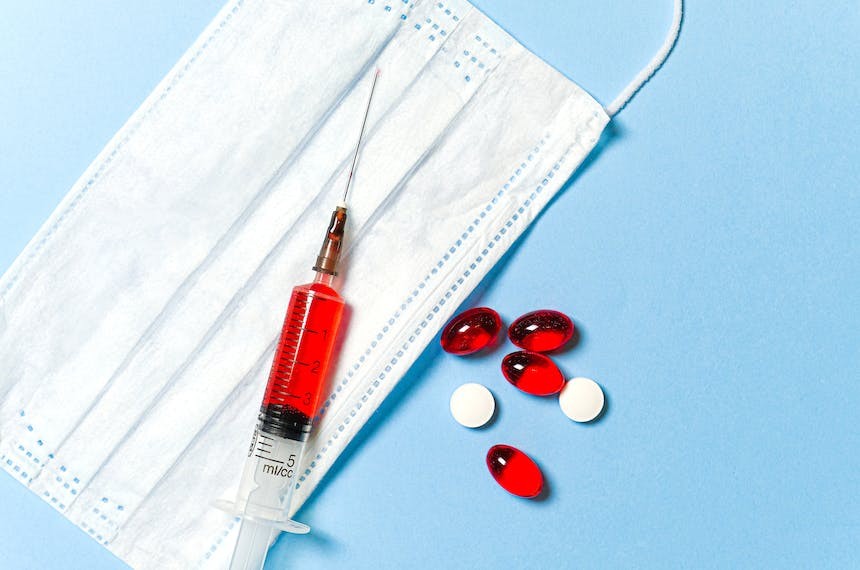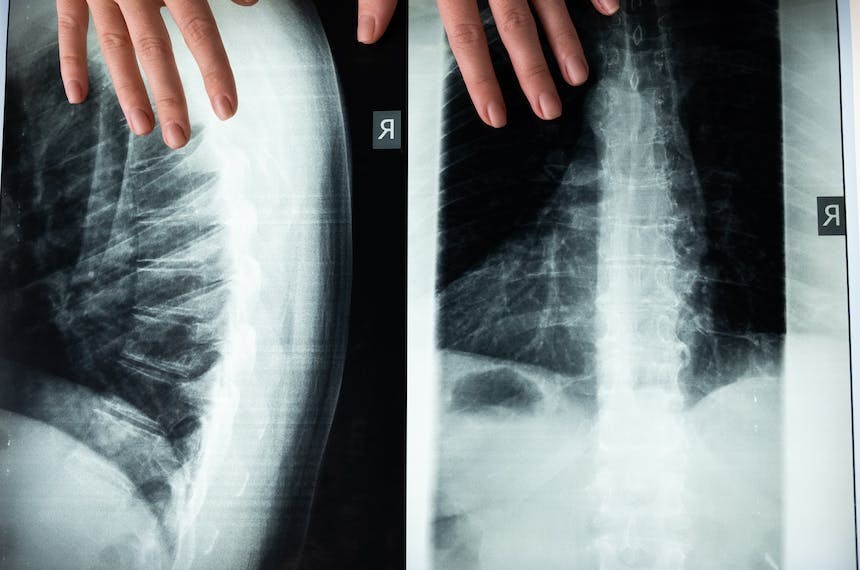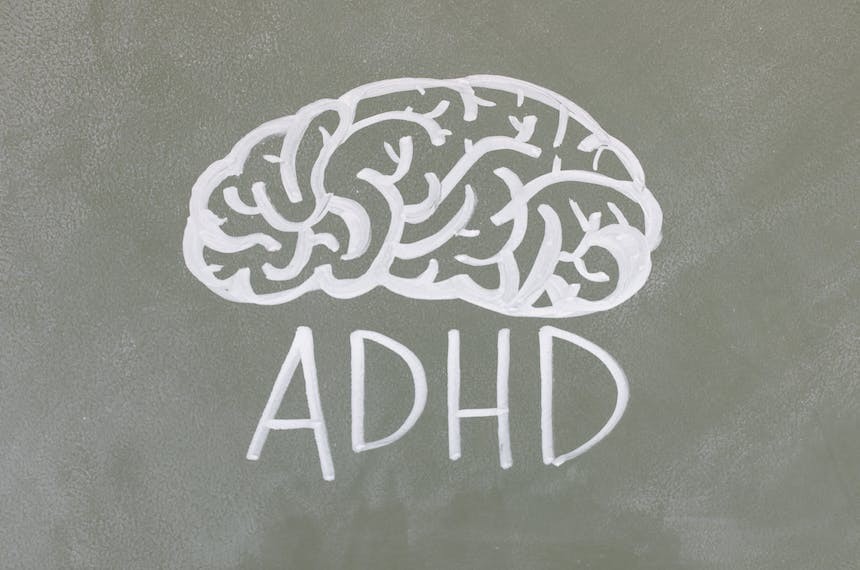
MYASTHENIA GRAVIS MANAGEMENT
Explore the intricacies of Myasthenia Gravis Management with this comprehensive guide. From crucial investigations for accurate diagnosis to detailed drug regimens and overall patient care, this article covers it all.
Investigations
Ocular Myasthenia
- Acetylcholine receptor antibodies (negative in half the patients)
- MUSK antibodies positive in a few patients (case reports only)
- LRP4 antibodies may be positive (may test for if MUSK and AchR are negative)
- CSF studies to exclude carcinomatous and lymphomatous meningitis. Keep in mind that malignancy is a very common cause of multiple cranial nerve involvement.
- Differential includes Myotonic Dystrophy and Oculopharyngeal dystrophy (progressive ptosis, dysphagia and proximal weakness starting in 4th or fifth decade)
Generalized Myasthenia
- Binding antibodies present in 90% of patients
- Blocking antibody found in 50%
- Modulating antibodies found in 5%. False positives are seen.
- Antibodies do not correlate well with severity
- Testing to be done before starting immunomodulating treatment because the meds can turn the test negative.
- MUSK antibodies in 50% of myasthenia patients who are negative for receptor antibodies. Usually not seen if the receptor antibody is positive. Usually not seen in Ocular form, but has been reported in case studies. MUSK + patients are less likely to have thymic disease.
- If a patient has myasthenia and is negative for receptor antibodies and MUSK, he is seronegative. Some of these patients may be positive for LRP4.
- Titin antibodies if positive indicates likelihood of Thymoma.
- Titin antibodies also correlate with severity of the disease.
- Anti-striatal muscle antibodies present in 80% of myasthenia patients with Thymoma.
- Repetitive nerve stimulation studies : sensitivity 75%
- Single fiber EMG study: sensitivity 95%
Thymoma and Myasthenia
- 10% of Myasthenia patients have Thymoma
- 40% of Thymoma patients have Myasthenia
Treatment
Time to response for each treatment:
Contraindications:
Imuran : liver disease; Cyclosporine: Renal disease; Steroids: Diabetes Mellitus, Old age
Bridge Therapy:
Usage of IVIG at a monthly dose of 0.4 gm/kg while waiting for immunomodulatory therapy to kick in.
In refractory patients IVIG 5 days every 6 weeks.
Time to improvement:
Thymectomy : improvement seen in 6-12 months; Plasma exchange: within days; IVIG: one week; Steroids: 2 weeks; AZT: 3 months - 1 year
Drug Regimens:
Prednisone:
Starting dose of 20 mg daily; Increase by 5 mg every week. Target dose is 1mg/kg/day; Stay at this dose for one month; Then reduce the dose by 10 mg each month until we reach 30 mg.; Then reduce by 5 mg each month.; Target maintenance dose is 5-10mg/day.
Onset of benefit at 4-8 weeks.
While on steroids institute following precautions:
Calcium 1000 mg / day in men and 1500 mg / day in post menopausal women; Vitamin D 400-600 U / day; 1800 cal 4 gm Sodium diet; DEXA study every 6 months. If bone loss detected, consider Alendronate; Pepcid; Azathioprine (Imuran); TPMT (Thiopurine Methyltransferase) enzyme assay must be done.
Normal range is 68-150 mU/L. If this is deficient increases chances of hematological toxicity, and Imuran should not be used.
50 mg daily for two weeks; If CBC and LFT are stable, increase to 50 mg po bid
Mean dose is 150 mg / day (2mg/kg)
While on Imuran, institute following precautions:
WBC and LFT q weekly for one month, then q monthly for one year, then every 2 months
If WBC 3000-4000, reduce dose by 50 mg.
If WBC <3000 or lymphocytes < 1000, discontinue temporarily
Onset of benefit at 3-12 months.
If LFT increases two fold or more, discontinue medication. Aminoglycosides, Clozapine and Bactrim increase risk of toxicity.
Cyclosporine
Do not use if creatinine is elevated; Start at 3-6mg/kg/day in two divided doses; Check levels every 2 weeks, until 100-200 micrograms/L; BP every two weeks for 3 months, then monthly
BMP every month. If creatinine >30% increase, then discontinue
Takes about 7 months for optimal effect.
Mycophenolate
Inhibits purine synthesis
Start at 1000 mg po bid. Check CBC weekly for one month, then monthly. If renal function is normal may increase to 1500 mg po bid; Effect is seen in 2-6 months
Nausea, vomiting, leukopenia, edema and cancer are potential problems; Can cause renal toxicity, hallucinations, cancer, tremor, seizures.
Overall Management
Generalized Myasthenia
Start with Mestinon, 30 mg three times daily is a good starting dose. Maximum dose is 120 mg po q 4h during waking hours of the day. Mestinon TS 180 mg used in some patients at bedtime if there is severe weakness on awakening.
Adverse effects of Mestinon: Abdominal cramps and diarrhoea, sweating and bradycardia in some patients. Anticholinergic meds may be used to block the muscarinic effects of Mestinon.
Hyoscyamine 0.125 mg po tid OR Glycopyrrolate 1 mg po tid; Diarrhoea from Mestinon can also be treated with Imodium.
Thymectomy: offer in all patients with seropositive generalized Myasthenia patients who are below the age of 60. Thymectomy to be done in all patients with Thymoma.
Add immunosuppressant therapy if symptomatic despite Mestinon;Start with Prednisone. Young patients, especially women in childbearing age group: Prednisone is preferred.
Older patients: may start with Prednisone, but then switch to an alternative such as Imuran.
Liver disease: avoid AZT
Renal disease: Avoid Cyclosporine and Tacrolimus
Leukopenia: Avoid AZT, Mycophenolate
Mycophenolate or Cyclosporine or Tacrolimus are next in line.
Refractory patients: Rituximab or Cyclophosphamide
Ocular Myasthenia
2/3 of patients will eventually develop generalized weakness. Most of this conversion happens in the first 3 years. Start treatment with Mestinon, if disabling symptoms continue, start steroids.
60-80% of Ocular Myasthenia patients will need Immunosuppressants. Ocular symptoms more likely to respond to steroids than to Mestinon. In majority of patients symptoms resolve within a month on steroids.
If no response to steroids in 3 months, the diagnosis of Myasthenia may be wrong. AZT (Imuran) may be used if adverse effects from steroids unacceptable. Thymectomy if thymoma is present. Thymectomy in Ocular Myasthenia Gravis reduces likelihood of generalization, and should be considered even in the absence of Thymoma in patients below the age of 60 if medically refractory disease or major contraindications to immunosuppressive therapy.
Surgical treatment for ptosis can be considered if patient has been having stable ptosis for 3 years despite medical measures.
Medications used for Myasthenia
Prednisone; Starting dose 20 mg daily; Increase by 5 mg every week; Target dose is 1 mg / kg/ day; Stay at this dose for one month; Thereafter, cut the dose by 10 mg each month until you reach 30 mg
Then cut the dose by 5 mg each month; Target maintenance dose is 5-10 mg/ day; It takes around 4-8 weeks to see the benefit
Precautions when using steroids:
PPD test; Calcium 1000 mg per day in men, 1500 mg per day in post menopausal women; Vitamin D 400- 800 units per day
1800 cal 4gm sodium diet; DEXA study every 6 months. Treat with Alendronate if bone loss noted;Pepcid;Steroids Adverse; effects; Weight gain; Hypertension; Cataract; Insomnia; Myopathy; Mood swings; Hypokalemia; Aseptic hip necrosis; Acne; Activation of Tuberculosis; Bridge Therapy
May use IVIG 0.4 gm/kg monthly while waiting for immunomodulatory treatment to kick in
IVIG is also used in refractory patients , 5 days of IVIG every 6 weeks
Immunosuppressants in MG management
Do not use Imuran in liver disease
Do not use Cyclosporine in kidney disease
Avoid steroids in diabetic patients and in old age
Imuran (Azathioprine)
Check TPMT (Thiopurine Methyltransferase Activity) Erythrocyte Enzyme level assay
before starting Imuran. If levels are low or intermediate , there is increased risk of myelotoxicity
Azathioprine may be started as steroids are being tapered
50 mg daily for one week
If CBC / LFT is stable, increase to 50 mg po bid after 2 weeks
Mean dose is 150 mg per day (2mg/kg)
Side effects: Macrocytic anemia, Leukopenia, Flu like symptoms, Thrombocytopenia,Pancreatitis, CA, NHL
Check WBC AND LFT every week for one month
Then once a month for one year
Then every 2 months
If WBC count is 3000-4000, reduce dose by 50 mg
If WBC count < 3000 or Lymphocyte count < 1000, discontinue medication
If LFT shows a X 2 increase, stop the medication
Check amylase levels if suspicion of pancreatitis
Onset of effect in 3- 12 months
Cyclosporine
Do not use if creatinine is elevated
2-4 mg/kg/ day in two divided doses
Trough level to be drawn 30-60 minutes prior to AM dose
Oral dosing is used. If IV dosing is used, remember to use 1/3 of the oral dose.
Check levels q 2 weeks
Target range is 100 - 200 micrograms / liter
After that, monthly levels should be checked
Blood pressure measurements q 2 weekly for 3 months , then monthly
If creatinine shows a 30% increase, discontinue medication
Takes around 7 months for the effect to kick in.
Nephrotoxicity and Hypertension is the main issue to remember. Use if Imuran fails or is not tolerated.
Mycophenolate (Cellcept)
Inhibits purine synthesis
Dose 1000 mg po bid
Protocol:
CBC weekly x 1 month
CBC every 2 weeks x 3 months
CBC every 4 weeks x 8 months
If renal function is ok, may increase dose upto 1500 mg po bid
Takes effect in 2-6 months
Adverse effects include nausea, vomiting, diarrhoea, leukopenia,
peripheral edema, cancer.
Effectiveness has been questioned. May be tried if Imuran fails or is not tolerated.
Tacrolimus (Prograf)
Macrolide
Dose 0.1 mg/kg/day in 2 divided doses
Keep levels 7-8 ng/ml
Acts on Ryanodine receptors, and potentiates excitation contraction coupling.
Remission in 90% of patients
Adverse effects: Hypomagnesemia, Tremor, Paresthesias
Overall Tacrolimus is well tolerated but value as a steroid sparing agent has been questioned, but a dose reduction in steroids will be possible.
If anti-RyR antibodies are positive, indicates a good response to Tacrolimus.
Use in poorly controlled disease when RyR antibody is positive.
Rituximab
Monoclonal antibody against B cells
Depletes B cells;Used in refractory Myasthenia Gravis
Can rarely cause PML;Cyclophosphamide May be considered if Rituxmab fails; Reduces proliferation of T abd B cells
Monitor for Hemorrhagic cystitis, Cardiomyopathy, Bladder Cancer, Pneumonitis
IVIG
Clinical exacerbation or crisis.
PE use in patients who do not respond to or do not tolerate IVIG





